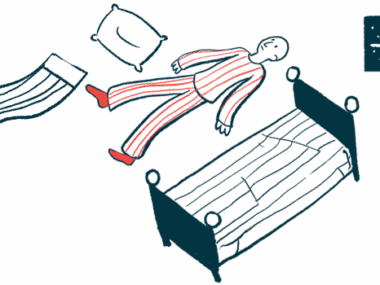Access to food, transportation key for sickle cell children: Study
Preschoolers with limited access found to be at high risk for health issues
Written by |

Preschool-aged children with sickle cell disease (SCD) living in so-called food deserts, or areas where access to healthy food is limited, and those without reliable transportation are at a higher risk of experiencing health issues than other youngsters with SCD, even when they receive good medical care, a study found.
The study, “Social Determinants of Health Affect Disease Severity Among Pre-School Children with Sickle Cell Disease,” was led by Jason Hodges, PhD, of St. Jude Children’s Research Hospital in Memphis. It was published in Blood Advances, the journal of the American Society of Hematology (ASH).
“Despite the level of care received by the families and patients within our clinic, we still have a gap in terms of being able to address the barriers they’re experiencing within the community,” Hodges said in an ASH press release detailing the study’s findings on “social factors significantly [affecting] patient health” among these young children.
“We need to think about the neighborhood and context that these patients and families are coming from because that has a huge impact on health,” Hodges said.
Differences in care may arise from disparities in social determinants of health, known as SDoH, which are factors that affect a person’s overall health and well-being. These factors include the conditions in which a person is born, grows, lives, works, and ages — and take into account variables such as proximity to grocery stores and access to transportation.
In one example, the study found a more than 40% increase in hospitalizations among children whose homes were more than a mile from a supermarket.
Study involved 435 sickle cell children treated at St. Jude in Memphis
While previous research has shown an overall link between SDoH and health issues, this study aimed to explore specific community-level factors, such as access to grocery stores and transportation options, and how these affect children with SCD. The study also took into account parental education.
A total of 435 children ages 6 and younger, who had enrolled in a program at St. Jude Children’s Research Hospital, were involved in the study. All of the participants were African American children and many had severe forms of sickle cell disease. The researchers looked at where these children lived and how that was related to their health, focusing on things like how far their homes were from grocery stores and the education levels of their parents.
Children living more than a mile away from a grocery store had a 44% greater chance of being hospitalized and a 37% higher likelihood of needing urgent care. Children without access to a car who lived in food deserts faced even greater risks. Interestingly, children whose parents had at least a bachelor’s degree were 33% less likely to be hospitalized or require urgent care.
“Preschool children with SCD with limited access to food and transportation are at a higher risk of acute complications despite receiving free evidence-based therapy and social support. The family education level may have a protective effect,” the researchers wrote.
According to the team, insights from this study will help inform public policy to bring more resources to communities in need.
The data suggest that, regardless of how much care you provide and how many new therapies are out there for patients who have chronic illnesses like SCD, unless you start addressing these deep-rooted issues, like food deserts [lack of access to healthy foods] or quality of life from the neighborhood standpoint, it’s always going to be extremely tricky to holistically provide care to [this] patient population.
Understanding how neighborhood characteristics affect health can guide efforts to allocate resources effectively and reduce health disparities, the researchers noted.
“The data suggest that, regardless of how much care you provide and how many new therapies are out there for patients who have chronic illnesses like SCD, unless you start addressing these deep-rooted issues, like food deserts or quality of life from the neighborhood standpoint, it’s always going to be extremely tricky to holistically provide care to our patient population,” said Hamda Khan, the study’s first author and a clinical research associate St. Jude.
The findings also call for more studies to examine other factors, such as household size and environmental hazards, that could affect the health of children with SCD, the team noted. By exploring these issues, they said, researchers can develop better strategies and interventions.
It is important to note that this study focused on young children receiving comprehensive care, so its findings may not be applicable to older SCD patients or to those who haven’t received similar support, the team noted. The study also had certain data limitations, including a lack of information on how well patients adhered to their prescribed therapies.






